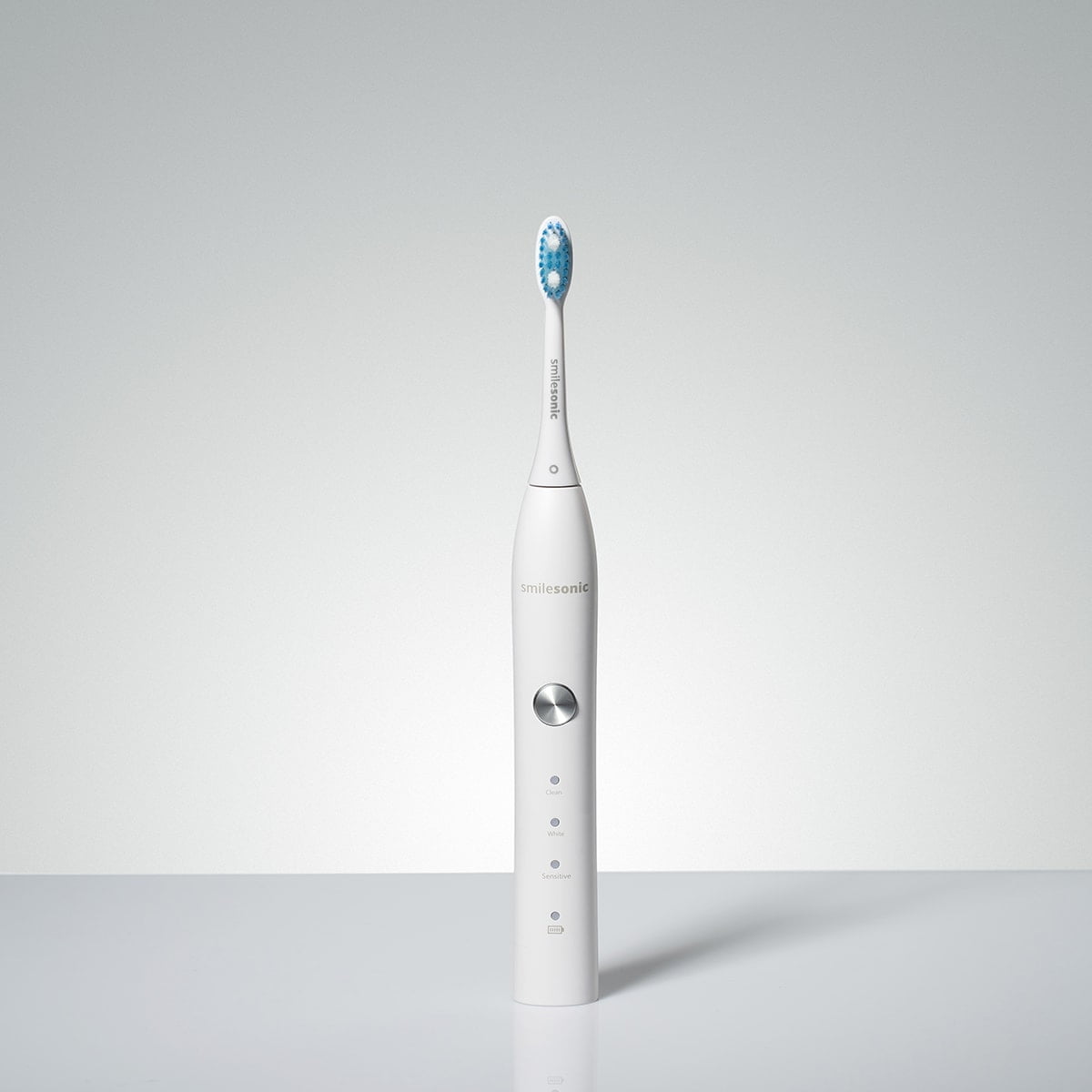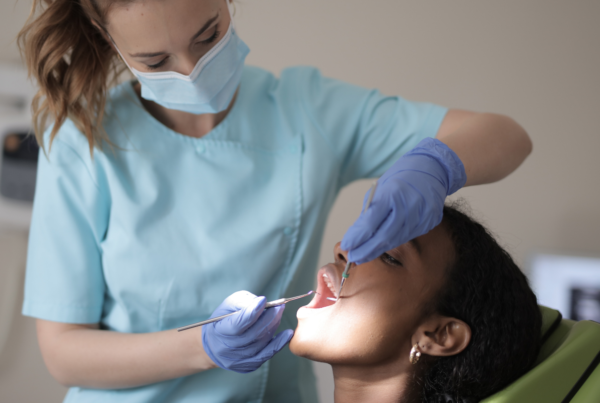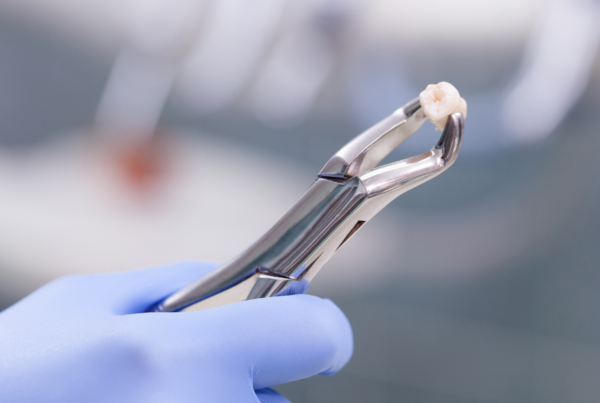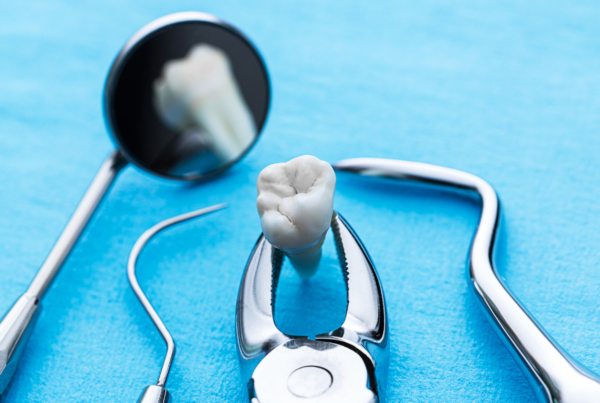Dry socket – a painful complication after tooth extraction
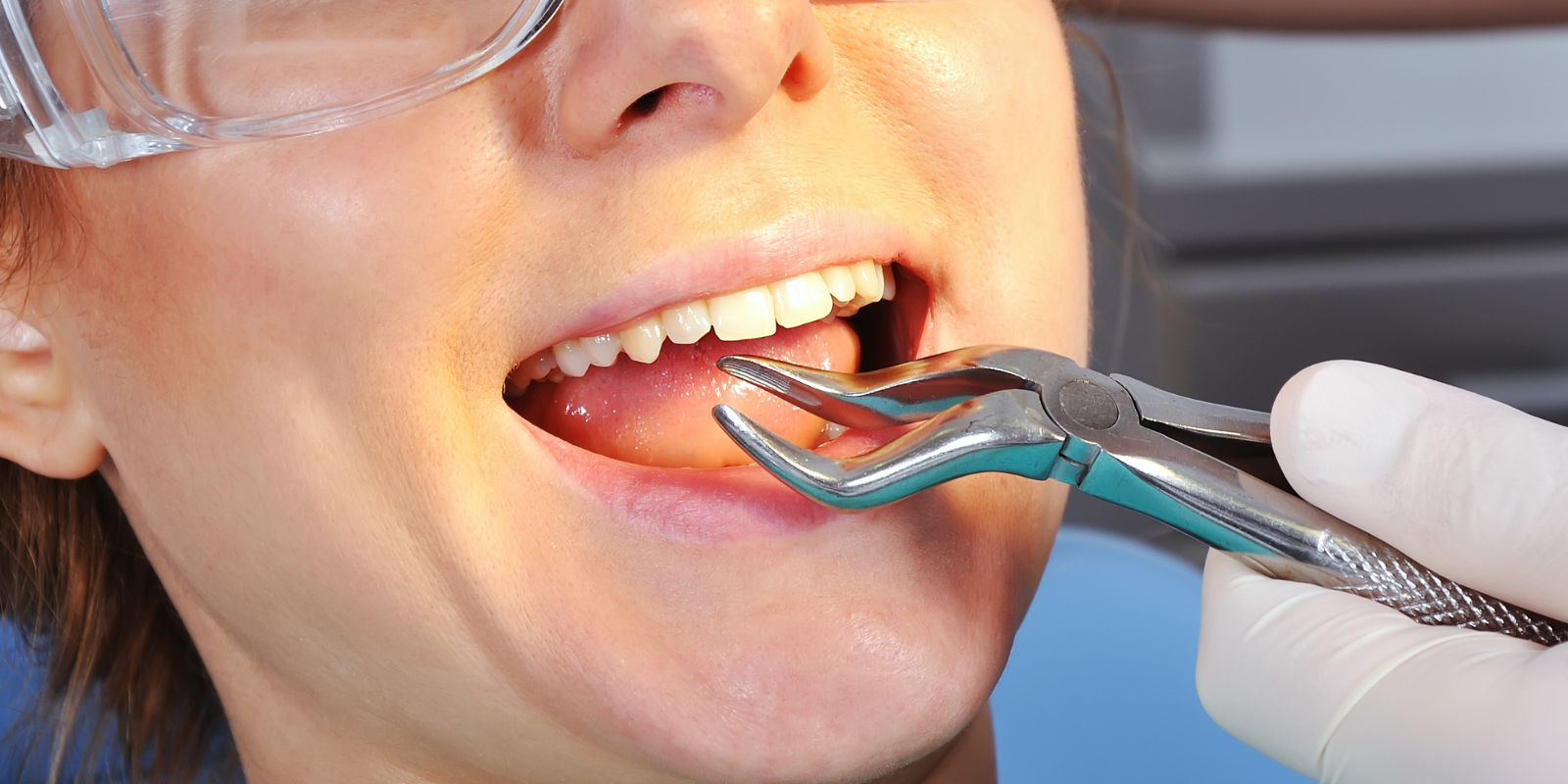
Tooth extraction is a common dental procedure that usually goes smoothly and without complications. However, in some cases, a painful complication known as dry socket (alveolitis sicca) may occur. This condition disrupts the healing process of the wound, resulting in intense, throbbing pain and discomfort. Why does dry socket develop, how can you recognize it, and how can you prevent it? What are its symptoms and causes? What does a dry socket look like? In this article, you’ll find answers to all these questions.
What is a dry socket after tooth extraction?
Dry socket is a post-extraction complication that occurs when no blood clot forms in the socket. The clot plays a key role in proper healing—it protects the socket from infection, creates a suitable environment for tissue regeneration, and acts as a natural barrier against irritation. Without the clot, the bone and nerves in the socket are exposed, leading to severe pain and a prolonged healing period. Although it’s relatively rare, the risk increases after more complex extractions, such as wisdom tooth removal.
Causes of dry socket
Dry socket, also known as alveolitis sicca, is a painful complication that arises when the natural healing process is disturbed. The main cause is the absence or dislodgement of the blood clot that forms in the socket after tooth removal. This clot helps regenerate tissues and shields bone and nerve endings from external irritants. When missing, it exposes the area to pain and potential infection. The causes of dry socket vary and may result from external factors or the patient’s individual predispositions.
1. Loss or dislodgement of the blood clot
The most common reason for dry socket is the mechanical removal or loss of the blood clot, which can occur due to:
- vigorous rinsing of the mouth in the first hours after extraction
- drinking through a straw, which creates suction that can pull the clot out
- habits such as sucking, touching the area with the tongue, or poking it with fingers
2. Smoking
Smoking is one of the main risk factors for dry socket. Nicotine constricts blood vessels, reducing blood flow to the wound and impairing clot formation and healing. Additionally, smoke and toxins irritate the wound and may lead to infection. The suction from smoking can also dislodge the clot.
3. Poor oral hygiene
Inadequate hygiene after tooth extraction may lead to bacterial buildup, increasing the risk of infection and delaying healing. Excessive or aggressive brushing around the extraction site can also disturb the clot and cause complications.
4. Eating unsuitable foods
Hard, sticky, or crunchy foods can damage the clot or leave food particles in the socket, increasing the risk of infection. Hot foods may also disrupt clot stability.
5. Individual predispositions
Health conditions that may increase dry socket risk include:
- clotting disorders
- diabetes, which impairs healing
- hormonal imbalances such as menstruation or hormonal contraception
- a weakened immune system due to chronic illness, stress, or immunosuppressive medication
6. Difficult or complicated extractions
More complex surgical extractions, especially of deeply impacted teeth, are associated with a higher risk of dry socket due to the larger wounds and greater tissue trauma.
7. Ignoring post-op instructions
Not following your dentist’s post-extraction guidelines—such as avoiding rinsing, smoking, or drinking through a straw—increases the chance of developing complications. Proper care during the first few days is crucial for clot stability and wound healing.
READ MORE: What to eat after tooth extraction?
Dry socket symptoms – what does it look like?
Dry socket, or post-extraction alveolitis, causes intense pain at the extraction site. The pain may radiate to the ear, temple, or neck, significantly affecting daily activities. A visible empty socket, without a blood clot, and exposed bone are characteristic signs. Additional symptoms include foul breath and inflammation. The pain is much more severe than typical post-extraction discomfort and requires immediate dental attention.
Diagnosing and treating dry socket – how to promote healing?
Diagnosis of dry socket is based on the patient’s history and a clinical exam by a dentist. The visible absence of a clot and exposed bone are telltale signs. The dentist will also look for inflammation and infection. In some cases, it’s necessary to rule out other causes of pain, such as bone infection or adjacent tissue damage.
Treatment includes cleaning the socket with saline to remove debris and bacteria. Then, the dentist applies a medicated dressing with anti-inflammatory and analgesic agents to relieve pain and support healing. The dressing may need to be replaced over the following days. Patients may also be prescribed antibiotics, painkillers, and gentle mouth rinses such as chamomile or chlorhexidine. Follow-up appointments ensure proper healing and rule out further complications.
Fast diagnosis and proper treatment reduce pain, prevent complications, and accelerate recovery. If symptoms arise, don’t delay—consult your dentist.
Can dry socket be prevented?
Yes, dry socket can often be prevented by carefully following your dentist’s post-extraction instructions. The key is protecting the blood clot that forms in the socket, as it enables proper healing.
To minimize the risk:
- avoid rinsing your mouth vigorously for 24 hours after extraction
- don’t drink through straws, smoke, or suck on the wound
- avoid touching the extraction site with your tongue or fingers
- choose soft, lukewarm foods over hot, sticky, or hard meals
- maintain gentle oral hygiene near the site without disturbing the clot
- stay away from alcohol and carbonated drinks that may irritate the area
Proper care and adherence to your dentist’s advice support healthy healing and help prevent dry socket.
Summary – dry socket after tooth removal
Dry socket is one of the most common complications after tooth extraction and usually appears a few days after the procedure. The best way to prevent it is by following your dentist’s instructions and avoiding behaviors that could interfere with the healing process. If you experience intense pain, bad breath, or a visible empty socket, contact your dentist immediately. Early diagnosis and treatment can prevent further issues and speed up recovery.
